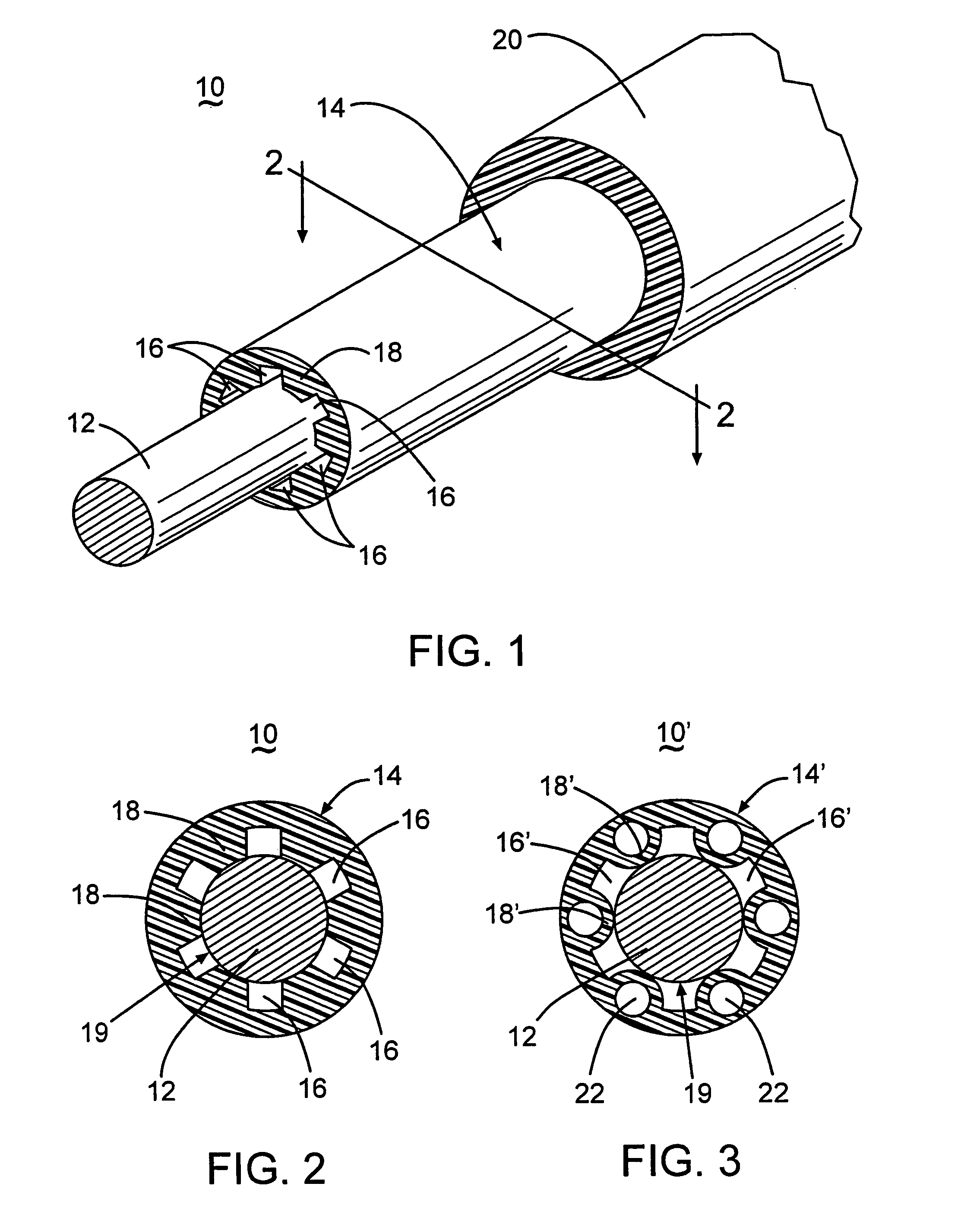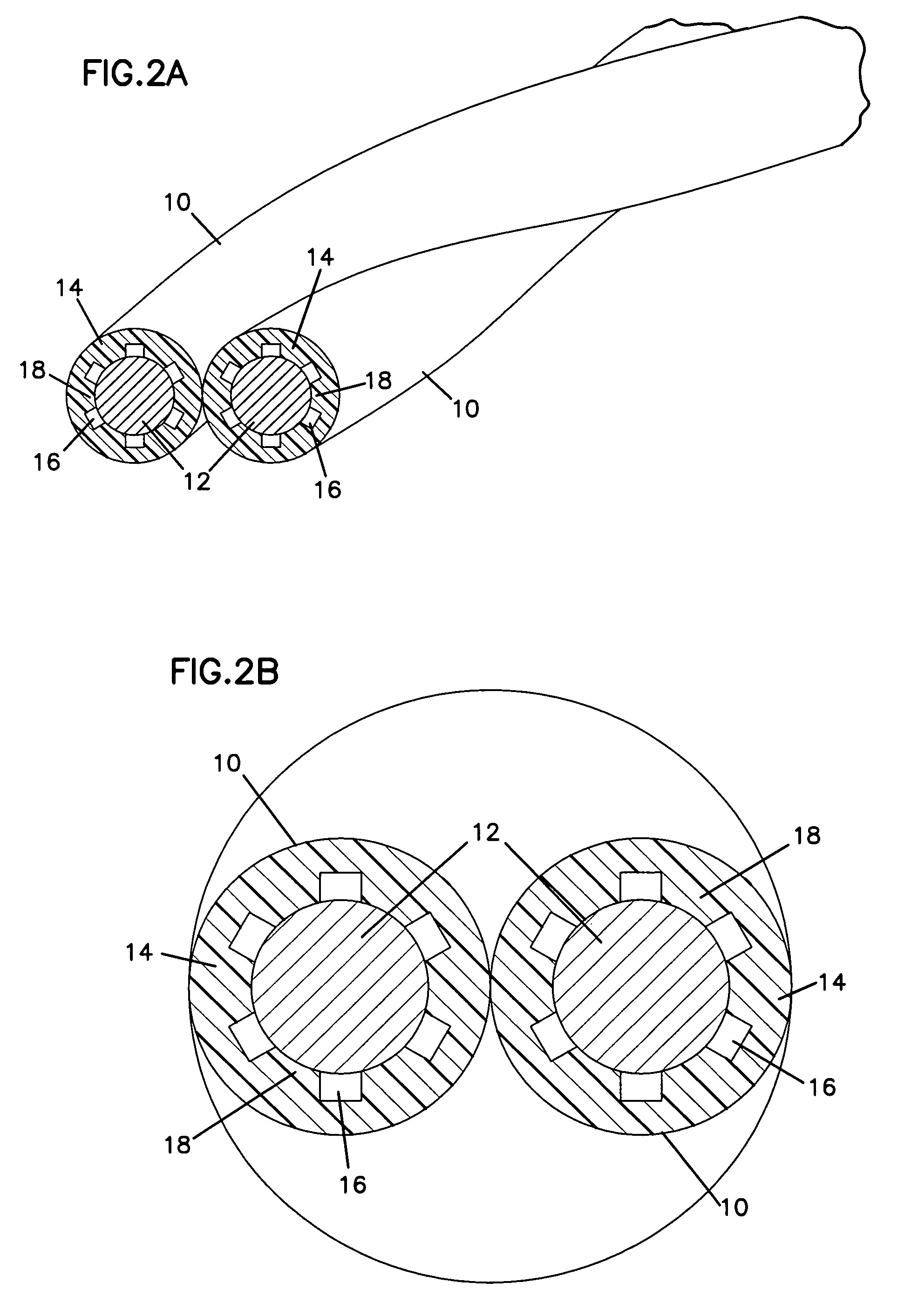Communication wire
a technology of communication wires and wires, applied in the field of wires, can solve problems such as transmission errors or data loss, delay skew problems can become increasingly magnified, and the signal cannot be properly reassembled
- Summary
- Abstract
- Description
- Claims
- Application Information
AI Technical Summary
Benefits of technology
Problems solved by technology
Method used
Image
Examples
Embodiment Construction
[0025]The wire of the present invention is designed to have a minimized dielectric constant (DK). A minimized DK has several significant effects on the electrical properties of the wire. Signal throughput is increased while signal attenuation is decreased. In addition, delay skew in twisted pair applications is minimized. The minimized DK is achieved through the utilization of an improved insulated conductor or isolated core as described below.
[0026]A wire 10 of the present invention has a conductor 12 surrounded by a primary insulation 14, as shown in FIG. 1. Insulation 14 includes at least one channel 16 that runs the length of the conductor. Multiple channels may be circumferentially disposed about conductor 12. The multiple channels are separated from each other by legs 18 of insulation. The individual wires 10 may be twisted together to form a twisted pair, as shown in FIGS. 2A and 2B. Twisted pairs, in turn, may be twisted together to form a multi-pair cable. Any plural number...
PUM
| Property | Measurement | Unit |
|---|---|---|
| thick | aaaaa | aaaaa |
| dielectric constant | aaaaa | aaaaa |
| diameter | aaaaa | aaaaa |
Abstract
Description
Claims
Application Information
 Login to View More
Login to View More - R&D
- Intellectual Property
- Life Sciences
- Materials
- Tech Scout
- Unparalleled Data Quality
- Higher Quality Content
- 60% Fewer Hallucinations
Browse by: Latest US Patents, China's latest patents, Technical Efficacy Thesaurus, Application Domain, Technology Topic, Popular Technical Reports.
© 2025 PatSnap. All rights reserved.Legal|Privacy policy|Modern Slavery Act Transparency Statement|Sitemap|About US| Contact US: help@patsnap.com



